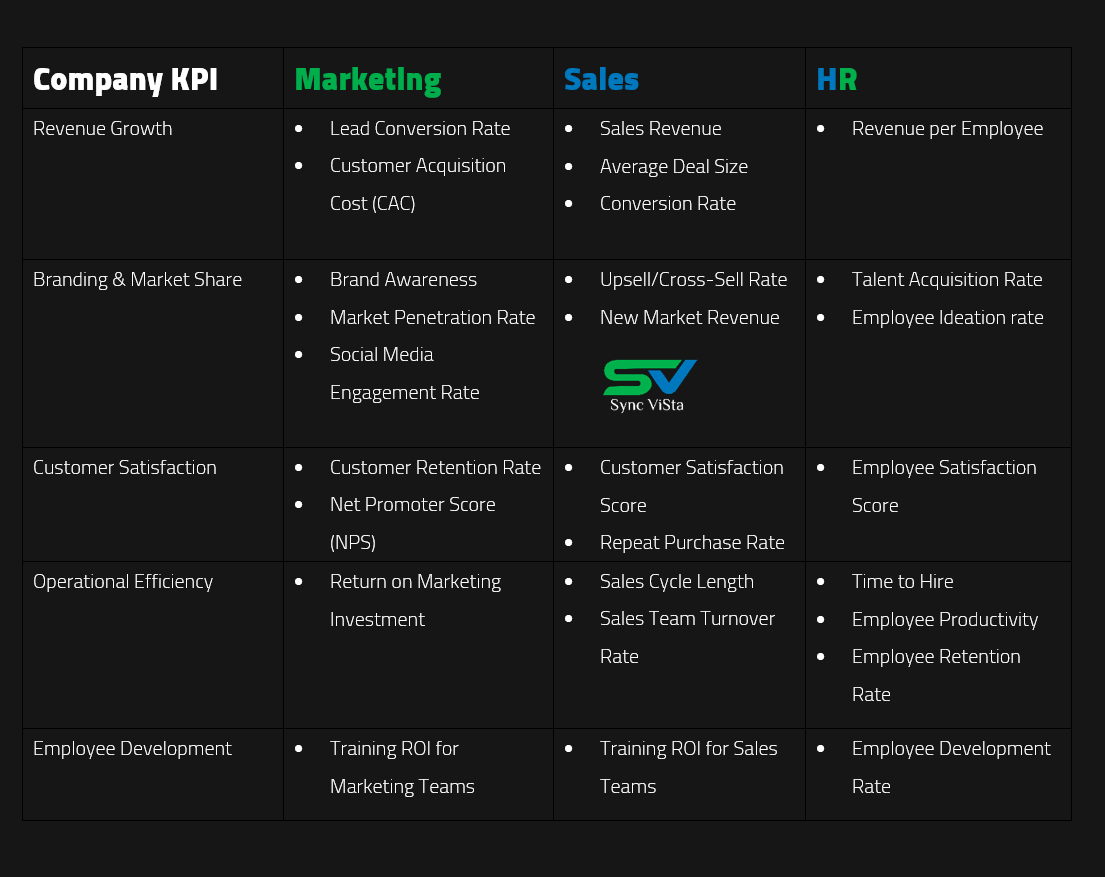In the business world, the synergy between sales, marketing, and HR is often underestimated and a structured synchronization can drive unparalleled business success. Let’s explore why.
The Key Differences Between Marketing, Sales & HR
1. Focus and Goals:
- Marketing: Builds brand awareness, generates leads, and positions the company in the market
- Sales: Focuses on generating revenue by closing deals and meeting quotas
- HR: Manages talent, fosters employee engagement, and ensures organizational alignment
2. Thinking Style:
- Marketing: Strategic, focusing on long term brand building and market trends
- Sales: Tactical, with a focus on short term goals and immediate results
- HR: People centric, focusing on employee development and organizational culture
3. Perspective:
- Marketing: Brand centric, focusing on market perception and audience engagement
- Sales: Customer centric, focusing on individual customer relationships
- HR: Employee centric, focusing on workforce satisfaction and productivity
The Power of Synchronization
The Synchronization of marketing, sales and HR creates a powerful synergy that drives holistic growth. Here’s why:

Aligned Goals:
- Aligning efforts towards common objectives like revenue growth, brand strength, and employee satisfaction
- Marketing generates leads, sales convert them, and HR ensures the team is motivated and skilled to deliver results

Customer and Employee Understanding:
- Sales provides insights into customer needs
- Marketing uses this data to refine strategies
- HR ensures the workforce is trained and aligned to meet these customer demands

Consistent Messaging and Culture:
- A unified approach ensures consistent brand messaging across all touchpoints
- HR reinforces this messaging internally, creating a cohesive culture that supports external efforts

Improved Efficiency:
- Collaboration reduces duplication of efforts and optimizes resource allocation
- HR plays a key role in ensuring teams are structured for maximum efficiency

5. Holistic Growth:
- Marketing builds the brand, sales drive revenue, and HR ensures the organization has the talent and culture to sustain growth
The Effectiveness of Cross Functional Experience
Teams with experience in marketing, sales, and HR bring a unique perspective when working as one team. Here’s why:

- Versatility: They can adapt to tactical, strategic, and people centric needs
- Customer and Employee Focus: They understand both customer needs and employee dynamics, creating strategies that benefit both
- Better Communication: They bridge gaps between departments, ensuring alignment and collaboration
- Comprehensive Problem Solving: They address challenges from multiple angles, driving sustainable solutions
The integration of sales, marketing, and HR is essential for business success. By breaking down silos and fostering collaboration, companies can unlock their full potential and thrive in a highly competitive market.



